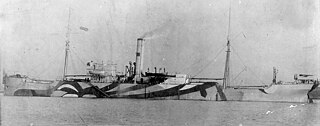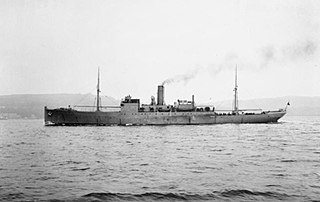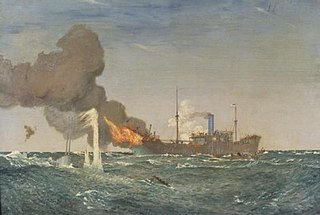 W
WSS Arvonian was a 2,794 GRT British freighter built in 1905, with a long and complex history under several names. She served in the British merchant marine, and was commissioned in the United States and British navies during World War I, before returning to merchant service, and eventually being sold to Latvia. In World War II she was taken over by the Soviet Union, then captured by Germany. Post-war she sailed under the Latvian and Costa Rican flags, until finally scrapped in West Germany in 1958.
 W
WHMS Baralong, also known as HMS Wyandra was a Royal Navy warship that was active during World War I. She was a "Special Service Vessel" whose function was to act as a decoy, inviting attack by a U-boat in order to engage and destroy it. Baralong was successful on two occasions in her career, sinking U-27 in August 1915, and U-41 in September 1915; however both these actions caused controversy, particularly the first, being referred to as the Baralong incidents.
 W
WHMS Coreopsis was an Anchusa-class sloop and Q-ship of the Royal Navy, built at the yards of Barclay Curle on Clydeside and launched on 15 September 1917. Employed as a decoy ship with concealed armament, she served with the Grand Fleet or in the Mediterranean operating from Gibraltar under the false names Beardsley and Bigott. After the end of the First World War, she was laid up before being sold for breaking on 6 September 1922, but did not arrive at Thos W Ward's yard in Preston, Lancashire until 5 May 1924.
 W
WCymric was a British and Irish schooner, built in 1893. She joined the South American trade in the fleet of Arklow, Ireland, in 1906. She served as a British Q-ship during the First World War; she failed to sink any German U-boats, but did sink a British submarine in error.
 W
WHMS Dunraven was a Q-Ship of the Royal Navy during World War I.
 W
WMary B Mitchell was a British schooner completed in 1892 that served as a Q-ship during the First World War. She was in service from April 1916 until the end of hostilities, operating in the Southwest Approaches from her base in Falmouth. She had several encounters with German U-boats in her career, and was credited with the destruction of two, though post-war analysis established that no U-boats were sunk. She had a reputation for being an efficient and successful vessel.
 W
WHMS Prize was a schooner converted to a Q ship during the First World War and commanded by Lieutenant William Sanders of the Royal Naval Reserve.